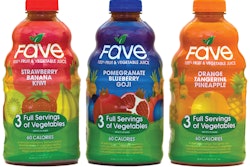
Over time, the ownership of suppliers in the contract packaging, as well as contract manufacturing industry, has evolved. As recently as the turn of the century most suppliers were privately held, often family owned. But as private equity (PE) became more prevalent in the US market, we began to see PE come onto the scene and buy some of these family businesses.
In some cases an investor or equity firm seeks to acquire a business and improve its performance over an investment horizon of, for example, three to nine years. Others use a “roll up” strategy, acquiring multiple companies and merging them. We saw the latter in May when Wind Point Partners (www.wppartners.com) merged two companies in its portfolio, Hearthside Food Solutions and RytWay Industries, creating a $1-plus billion, 19-site merger that Wind Point calls “the leading contract food manufacturer in North America.” (See news story.)
Consolidation plans vary in their degree of success in this capital intensive and low margin business. It can be a challenge to be profitable. So, what should your plan be to survive in these competitive and volatile times? The key is to know your competitive advantage.
One important element is in the area of operational excellence, which at its core is knowing what you do, and do best. You should be really good at it, or you won’t be an attractive supplier or acquisition otherwise. (You could be an attractive “fixer upper” to some buyers, but this isn’t an ideal strategy.)
Besides being operationally sound, you need to have a strategic plan with stretch goals and metrics; a continuous improvement program with documented successes; and a track record of innovation which keeps you at the top of your game. Innovation can include product innovation, but also entails continually finding ways to add value to your organization.
If you have these elements, you can then decide: Should you remain in the industry, or sell?
One way to decide which option is best is to look at your customer base. Is it diverse? Have you segmented your customers? Do you have strategies for each segment? Do you have strategic relationships with a small number of your customers with whom you have more collaborative relationships? Doing these things is a sign that you’re a leading supplier, and have a defined competitive advantage.
I hear some business owners expressing frustration with the pace of change and requirements to stay competitive. If this is an increasing concern, then perhaps the time has come to explore “strategic alternatives.” If you don’t have the drive to continually find ways to add value to your customers and the industry, then you are not likely to be successful in the long term.
If you are in for the long term, what can you do to increase your probability of success? Consider these points:
• Know your market. Who are the leaders, where do they play and how well?
• Know your organization, strengths, weaknesses, where you play and how well.
• Know key market, product and technology trends. How are you positioned to capitalize on these?
• Know the customers in your category/ies. What are their values? Do they approach the business more tactically or strategically? What are they asking for, and what are their emerging needs?
• Is there an opportunity to vertically integrate? If so, you might offer additional services up/down/horizontally within the supply chain.
• What are the growth opportunities? Sell existing customers more of their needs? Develop new customers? Offer new products/technologies? Acquire another organization with complementary capabilities (roll up strategy)?
What are the costs/benefits?
A roll-up strategy should be pursued with caution. A number of organizations have not met with market success, including my former employer. The challenges of combining disparate cultures and business processes should not be underestimated.
Today our industry is growing. If your business is meeting/exceeding the industry growth rate, then you are well positioned presently. The key to future success is to determine the most effective strategy moving forward to build on your success. If you are not growing with the industry, then other action steps are required.
Lisa Shambro is Executive Director of the Foundation for Strategic Sourcing/F4SS. Contact her at [email protected]
























